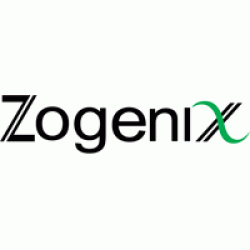I run across a lot of charts and graphs daily -- it comes with the territory. Only a few of them really grab my attention. But I just found one that I had to share, particularly since it gets to the heart of our very purpose over at The Daily Paycheck.
I'll show you what I'm talking about in a moment, but I won't bury the lead...
If you're not taking advantage of dividend payers, you're missing out -- not only on the income, but serious long-term gains as well.
Don't believe me? Here's the proof...
| ---Recommended Link--- |
| A legal (and easy) way to exploit arbitrage opportunities "I am making money every week. This is absolutely one of the best systems I have ever seen." Click here for details.. |
As you can see from the chart below, share price appreciation would have turned a $10,000 investment in the S&P 500 in 1960 into $460,095 by 2017. That's a handsome 45-fold return. But add reinvested dividends to the picture, and the same investment would have blossomed to $2.57 million, more than five times as much.

Source: Hartford Funds Management Group
In other words, reinvested dividends have accounted for 82% of the market's total returns over the past half-century. That remarkable statistic doesn't need any embellishment -- it speaks for itself.
I'll say it again: If you're not investing in dividend stocks, then you're missing out on the market's strongest wealth-creating opportunities.
Dividends Are Great Again
The relative contribution of dividends has varied dramatically over the years. Back in the stagnant 1970s, quarterly distributions accounted for a hefty 73% of the market's return. But in the high-growth 1990s, they represented a much smaller 16%.
I remember that period well. I was a financial advisor at the time, and dividend stocks (and funds) were a tough sell. Many of my clients considered them a quaint relic in the dawn of a new Millennium. Why get excited about a modest 3% to 4% annual income stream? Tech stocks could do that in a single day.
Instead, I got orders to buy highfliers like JDS Uniphase, which rocketed past $1,200 per share in 1999. You may know the rest of the story. Like most others, it collapsed in the dot-com crash a year later and lost 99.9% of its value before rebranding. That was a painful lesson for many investors.
But we are once again in an era where dividends account for a meaningful chunk of the market's performance. And if there's one thing better than a steady paycheck every 90 days -- it's a growing one.
Dividend Raisers Crush The Market
Obviously, dividend hikes put more cash in our pockets almost immediately. We can see and measure the impact. Take for example one of our own holdings at The Daily Paycheck, Cisco Systems (Nasdaq: CSCO), whose quarterly payout just rose to $0.33 per share from $0.29. With a stake of 212 shares, that hike boosts our annual income by 14% to $280.
But that might not even be the strongest argument for investing in these stocks.
As I've said before, a distribution increase sends a bullish message. After all, businesses don't lift their commitments if they're expecting earnings to falter. Higher dividends typically reflect an upbeat cash flow outlook, which often precedes a rising share price. So dividend raises not only boost our income, but they can also foreshadow potent capital gains.
How potent?
Well, we also have some good data on this subject courtesy of Ned Davis Research. Between 1972 and 2017, dividend-paying stocks outpaced non-payers with average annual returns of 9.25% vs. 2.61% for the non-payers. But a deeper look beneath the surface reveals a fascinating dichotomy.
The study separated all dividend payers into distinct groups: those raising payouts over the previous twelve months, those cutting or eliminating payouts, and those maintaining payouts with no change.
No surprise, dividend-cutters performed worst, and dividend-maintainers did better. But dividend-growers delivered market-crushing gains of 10.07% annually. That's about 230 basis points ahead of the S&P 500 -- with less volatility.
To put a real-world example on this, we're up by about 73% on Cisco in less than two years. That's partially thanks to our dividend reinvestment, a crucial part of our strategy at The Daily Paycheck. But even without reinvesting dividends, the stock has returned 63% during that time, while the S&P 500 has gained just under 14%.
Closing Thoughts
I'm probably not telling you anything you didn't already know. Dividend hikes are good for investors; that isn't exactly an Earth-shattering revelation. Still, it's reassuring to attach cold-hard numbers to long-held beliefs.
By the way, like Cisco, my most recent Daily Paycheck recommendation has also been on the move, rallying more than 50% off its 2015 lows. Yet, the yield is still well above average at nearly 3%. And with an impressive streak of 62 straight annual dividend hikes under its belt, I expect this all-weather performer to shell out even more in the year ahead. If you'd like to join us and get the name of this pick, go here to get started.

 Source: Peyri Herrera via Flickr (Modified)
Source: Peyri Herrera via Flickr (Modified) 
 Equities research analysts expect Zogenix, Inc. (NASDAQ:ZGNX) to post ($0.92) earnings per share (EPS) for the current quarter, Zacks Investment Research reports. Zero analysts have made estimates for Zogenix’s earnings, with estimates ranging from ($1.23) to ($0.63). Zogenix reported earnings per share of ($0.87) in the same quarter last year, which would indicate a negative year-over-year growth rate of 5.7%. The firm is expected to report its next quarterly earnings results on Tuesday, March 5th.
Equities research analysts expect Zogenix, Inc. (NASDAQ:ZGNX) to post ($0.92) earnings per share (EPS) for the current quarter, Zacks Investment Research reports. Zero analysts have made estimates for Zogenix’s earnings, with estimates ranging from ($1.23) to ($0.63). Zogenix reported earnings per share of ($0.87) in the same quarter last year, which would indicate a negative year-over-year growth rate of 5.7%. The firm is expected to report its next quarterly earnings results on Tuesday, March 5th. Girard Partners LTD. increased its position in shares of iShares MSCI Emerging Markets ETF (NYSEARCA:EEM) by 754.9% in the fourth quarter, according to its most recent disclosure with the Securities & Exchange Commission. The fund owned 8,327 shares of the exchange traded fund’s stock after buying an additional 7,353 shares during the period. Girard Partners LTD.’s holdings in iShares MSCI Emerging Markets ETF were worth $325,000 at the end of the most recent reporting period.
Girard Partners LTD. increased its position in shares of iShares MSCI Emerging Markets ETF (NYSEARCA:EEM) by 754.9% in the fourth quarter, according to its most recent disclosure with the Securities & Exchange Commission. The fund owned 8,327 shares of the exchange traded fund’s stock after buying an additional 7,353 shares during the period. Girard Partners LTD.’s holdings in iShares MSCI Emerging Markets ETF were worth $325,000 at the end of the most recent reporting period. 